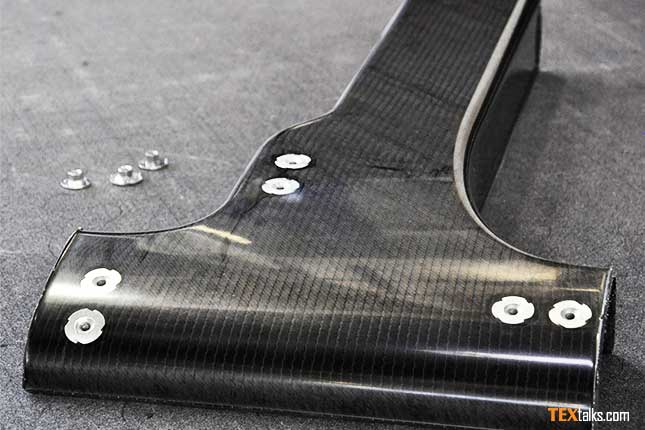The Institut für Textiltechnik of RWTH Aachen University (ITA) will present a novel multi-fibre coating system on a laboratory scale live for the first time at the JEC World 2020 event that is being held from March 3 to 5, 2020 in Paris.
The institute will also present innovations in glass and carbon fibre production at the joint stand of the Aachen Centre for Integrative Lightweight Construction AZL in Hall 5A Stand D97.

Impregnation and coating of high-modulus fibres
The multi-material fibre coating line coats or TowPregs will be made from thermoplastics and carbon fibres live at the JEC booth. With a maximum processing temperature of 400 degrees Celsius, it also allows high-temperature thermoplastics to be processed and tested with a wide variety of materials on a laboratory scale within one day, thanks to its preparation time of less than one hour. The current production speeds are five metres per minute, depending on the material used and the configuration of the system.
TowPregs with circular cross-sections of up to five millimetres in diameter and tape-like geometries of up to 20 millimetres in width can be produced at a production speed of five metres per minute – depending on the material used and the configuration of the line. The TowPreg produced on the line can thus be seen as a more cost-effective alternative to regularly produced tapes.
Carbon fibre production
One of the core research areas at ITA is the production of carbon fibres. ITA has a continuous pilot-scale carbon fibre production plant with a production capacity of less than one tonne per year.

The current main goal of research in carbon fibre production is to shorten the stabilisation time. By developing a novel method, the stabilisation time at ITA could be reduced from initially 50 minutes to approximately 21 minutes. The resulting fibres are at the level of a Toray T700 carbon fibre.
Textile technology and photonics revolutionise joining technology
The integration of Carbon fibre-reinforced (CFRP) into a textile preform and an additional curing process to produce the final CFRP component can shorten production process chains and can increase the performance of the joint by at least 50 percent. This requires high-precision cut-outs in the textile for the fasteners. In the NRW-based project CarboLase, funded by OP EFRE, laser material processing is integrated for the first time into an automated preforming process. A novelty in the process is the use of the material-friendly ultrashort pulsed laser, which processes the textiles without damaging them thermally.
High speed prepreg filament winding
ITA, in collaboration with Muratec, Japan, has development a novel Multi-Filament winding technology with which many fibres (48 fibres) can be wound simultaneously. This increases the processing speed by a factor of 50. Furthermore a coverage of 100 percent can be obtained in a single pass.

The working speed has been increased further with the development of high quality prepregs through the ZIM project MFWOptiPreg with the company FA Kümpers GmbH & Co KG. The optimised tack (stickness) and fibre breakage, high winding speeds and quality products can be achieved. Filament winding has an advantage of orienting the fibres in the desired direction (0°≤θ<90°).



